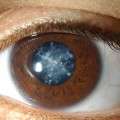TREATMENT OF SCHIZOPHRENIA
Introduction
Schizophrenia is the most severe of the mental disorders and although is discussed as if it was a single disease, the diagnostic category can include a variety of disorders that present with somewhat similar behavioral symptoms. Schizophrenia is frequently characterized by a chronic recurrent course and probably comprises a group of disorders with heterogenous causes and definitely includes patients whose clinical presentations, treatment responses, and courses of illness are varied. It occurs in all cultures, the incidence is about 2 to 4 cases per 10,000 population per year and the life time risk is about 1%. With conventional antipsychotic agents, at least 30% of schizophrenic patients exhibit an inadequate or poor response. Moreover as many as 60 % experience relapse after 1 year of therapy.
DOPAMINE HYPOTHESIS OF SCHIZOPHRENIA
The major brain areas implicated in schizophrenia are the limbic structures, the frontal lobes and the basal ganglia. The thalamus and the brainstem have also been implicated because of the role of thalamus as an integrating mechanism and the fact that the brainstem and the midbrain are the primary locations for the ascending aminergic neurons. For decades, the biochemical basis of schizophrenia and the mechanism of action of antipsychotic drugs was overly concentrated on the role of dopamine. The simplest formation of the dopamine hypothesis of schizophrenia posits that schizophrenia results from too much dopaminergic activity. The theory involved out of two observations. First, the efficacy and the potency of classical antipsychotics is correlated with their abilities to act as antagonists of the dopamine type 2 (D2) receptor. Second, drugs that increase dopaminergic activity, most notably amphetamine, are psychomimetics. Another positive association between the clinical efficacy of antipsychotics and their dopamine receptor activity is suggested by the effects of the drugs on the plasma concentration of homovanillic acid, the major metabolite of dopamine. Several studies have reported that high pretreatment concentrations of plasma homovanillic acid are positively correlated with an increased likelihood of a favorable clinical response. Furthermore, a decrease in plasma homovanillic acid concentrations early in the course of treatment is correlated with favorable clinical response. However, this basic theory, does not elaborate on whether the dopaminergic hyperactivity is due to too much release of dopamine, to many dopamine receptors, hypersensitivity of the dopamine receptors to dopamine, or some combinations of those mechanisms. Nor, this basic theory, specify which dopamine tracts in the brain may be involved, although the mesocortical and mesolimbic tracts are most often implicated.
Although the dopamine hypothesis of schizophrenia has stimulated schizophrenia research for more than two decades and remains the leading neurochemical hypothesis, it is difficult to explain the fact that dopamine antagonists are effective in treating virtually all psychotic and severely agitated patients, regardless of diagnosis. It is also difficult to explain the fact that although the dopamine receptor blocking effects occurs immediately, the full antipsychotic effects of the drugs may take weeks to develop. It is not possible, therefore, to conclude that dopaminergic hyperactivity is unique to schizophrenia.
DOPAMINE RECEPTOR ANTAGONISTS: CLASSICAL OR TYPICAL ANTIPSYCHOTICS
A diverse group of drugs that blockade the dopamine 2 (D2) receptor are commonly referred to as antipsychotic drugs. Reserpine, is historically the first effective antipsychotic drug. In 1931, Sen and Bose published the first paper reporting the effectiveness of rauwolfia in hypertension and mania. In 1953, the active ingredient, reserpine, was identified and quickly entered into the then limited pharmacological approaches to psychosis. Chlorpromazine, a phenothiazine derivative that was later shown to be a dopamine receptor antagonist, was the first so-called classical or typical antipsychotic to be synthesized in the early 1950s and to enter widespread clinical use. Not counting reserpine, seven classes of drugs are generally considered typical antipsychotics: 1.Phenothiazines, are typed according to the nature of the side chain: aliphatic (for example, chlorpromazine), piperazine (for example, fluphenazine) and piperidine (for example, thioridazine). 2.Thioxanthenes: chlorprothixene and thiothixene. 3.Dibenzoxazepines: loxapine (which, although have structural similarities with clozapine, the two compounds have different pharmacodynamic properties, and loxapine is clearly classifiable with dopamine receptor antagonists, whereas clozapine is not). 4. Dihydroindol : molindone. 5.Butyrophenones : haloperidol (the most widely used antipsychotic) and droperidol. 6.Diphenylbutylpiperidine : pimozide , and 7.Benzamides : sulpiride, raclopride (which has been used mainly as a radio-labeled ligand in PET studies), and remoxipride (that has specific receptor activity at D2 receptors and sigma receptors).
Although the pharmacokinetic properties of the classical antipsychotics vary widely (half-life range from 10 to 20 hours), the most of them can be given in one daily oral dose once the patient is in a stable condition and has adjusted to any adverse effects. Studies using the PET techniques in patients who were taking a variety of antipsychotics in different dosages have produced data indicating that occupancy of about 60% of the D2 receptors in the caudate-putamen is correlated with clinical response and that occupancy of more than 70% of the D2 receptors is correlated with the development of extrapyramidal symptoms. Other investigators have reported that theoritically adequate occupancy of D2 receptors can be found in patients who are still non responsive to antipsychotic drugs, thus indicating that occupancy of D2 receptors is not the only variable in clinical response.
The introduction of antipsychotic drugs revolutionized the treatment of schizophrenic patients and other seriously ill psychotic patients. The use of the classical antipsychotics results in significant clinical improvement in 50 to70% of psychotic patients, and almost 90% of psychotic patients receive some clinical benefit from the drugs. Nevertheless, most of the classical antipsychotics have significant effects on other receptors, including adrenergic, cholinergic, and histaminergic receptors. The α-1 adrenergic antagonist activity of many of the classical antipsychotics can result in vasodilation and orthostatic hypotension, the blockade of muscarinic cholinergic receptors results in dry mouth and constipation, and the imbalance of adrenergic – cholinergic activity and the increased prolactine levels result in sexual dysfunction. Finely, the classical antipsychotic drugs are associated with a number of uncomfortable and potentially serious neurological adverse effects. Neuroleptic-induced parkinsonism, dystonia and acute akathisia are common neurological adverse effects, during the first weeks of treatment and represent an imbalance of adrenergic – cholinergic – dopaminergic systems caused by the antipsychotics. Other serious neurological adverse effects include: the neuroleptic-induced tardive dyskinesia, the neuroleptic malignant syndrome, the risk of inducing a seizure and the sedation.
THE SEROTONIN – DOPAMINE INTERACTION IN SCHIZOPHRENIA
The dopamine and the serotonin system
The dopaminergic system arises from groups of cell in the midbrain. Neurons from the substantia nigra ascend to the striatum via the nigrostriatal pathway, and are primarily involved in the modulation of motor behavior, whereas neurons from the ventral tegmental area project to the limbic and cortical regions (mesolimbic and mesocortical projections) and are involved in cognition and modulation of motivation and reward. The effects of dopamine are mediated through a series of dopamine receptors, the D1 family (D1 and D5), which mediate the dopamine-stimulated increase of adenylate cyclase, and the D2 family (D2, D3, D4) which mediate effects that are independent of D1-mediated effects and also exert an opposing influence on adenylate cyclase activity . The D1 receptors are prominent in the cortical regions, the D2 receptors are prominent in the striatum, and theD3 and D4 receptors have a higher distribution in the limbic regions.
The serotonergic neurons also arise from discrete midbrain nucleis. The dorsal raphe nucleus that project to the cortex and the striatal regions and the median raphe nucleus that project to the limbic regions. The serotonergic receptors are grouped on the basis of shared genetic sequences and second messenger systems in four groups : 1. The 5HT-1 family ( 5HT-1A, 5HT-1D, 5HT-1E and 5HT-1F ) which uses G-protein – mediated signal transduction. 2. The 5HT-2 family ( 5HT-2A, 5HT-2B, 5HT-2C, 5HT-4, 5HT-6, 5HT-7 ) which uses phosphoinositol – mediated signal transduction. 3. The 5HT-3 receptor which uses ion – gated channels and 4. The 5HT-5 family, a new group of 5HT receptors, which contains the 5HT-5A and 5HT-5B receptors.
Serotonergic inhibition of dopaminergic function in the midbrain and extrapyramidal symptoms. The effects of atypical antipsychotics.
Serotonergic projections from the dorsal raphe nuclei project directly to the substantia nigra and inhibit the firing of the dopaminergic neurons. This stimulation of dorsal raphe serotonergic fibers releases serotonin in the substanta nigra. This is associated with a decrease in the firing rate of the dopaminergic neurons, suggesting an inhibitory modulation of the dopamine neurons which seems to be modulated by 5HT-2 receptors located on the somatodendritic surface [4]. As expected, anatomical or chemical lesions that disrupt the raphe – nigral projection, 5HT-1A agonists that functionaly inhibit the raphe – nigral neurons, or 5HT-2 antagonists that antagonize the effect of the raphe- nigral system all lead to a biochemical and functional disinhibition of the dopamine system [5].
Neuroleptic – induced extrapyramidal symptoms (EPS) in humans result from occupancy of D2 receptors in the striatum. Neuroleptic – induced catalepsy in animals which represents a similar mechanism, provides a valuable model to study EPS. Since serotonin exerts an inhibitory influence on the dopaminergic system, manipulations that inhibit serotonin function would be expected to disinhibit the dopaminergic system and ameliorate catalepsy. Anatomical and chemical lesions of the raphe nuclei prevent and ameliorate neuroleptic – induced catalepsy in rodents [6]. 5HT-1A agonists, inhibit the firing of serotonergic neurons. Several studies [7] reported a beneficial effect of 5HT-1A agonists in reversing and preventing the development of catalepsy in animals. These findings suggest that the combination of a 5HT-1A – agonist and a D2 – antagonist may lead to EPS – free antipsychotic activity. Subsequent reports using specific 5HT-2 antagonists have confirmed a role for 5HT-2 in alleviating catalepsy [7]. Ritanserin, a 5HT-2 antagonist, was able to antagonize haloperidol – induced catalepsy when induced with low doses of haloperidol but was ineffective when suprathreshold doses of haloperidol were used to induced catalepsy. Thus, 5HT-2 blockade may bestow only a limited protection from the effects of D2 blockade. Serotonergic agonists would be expected to further inhibit the dopamine system and worsen EPS. Thus, SSRIs enhance serotonergic transmission and worsen EPS in rodent and primate models [8].
Many reports have established clozapine s freedom from EPS in usual doses [9]. Is this related to clozapine s serotonin – dopamine interaction profile ? It has been postulated that clozapine s high ratio of 5HT-2 to D2 affinity may account for its diminished EPS [10]. PET studies suggest that patients receiving conventional neuroleptics experience EPS only when D2 occupancy exceeds a threshold somewhere in the range of 75-80 % D2 occupancy. Clozapine”s D2 occupancy varies from 20 to 67 % and has never been showed to exceed the putative threshold for EPS [11]. Thus clozapine s low EPS profile can be explained on the basis of its low D2 occupancy, and there appears to be no need to invoke the role of the serotonin – dopamine interaction to explain its superiority in alleviating EPS. There have been proposed [12] two hypothesis to explain how 5HT-2 antagonism prevents or alleviate EPS : 1. The addition of a 5HT-2 antagonist would shift the D2 occupancy curve to the right, thus increasing the dose at which the EPS threshold is crossed, and 2. 5HT-2 blockade may elevate the threshold for EPS, through the modulating influences on cholinergic or GABAergic mechanisms, without a direct effect on D2 occupancy. In the case of risperidone a series of doses from 4-8 mg / day, risperidone produces significantly fewer EPS than haloperidol. This superiority of risperidone in producing fewer EPS is not as striking as that of clozapine. The ability of HT-2 antagonism to counter the effects of D2 antagonism is limited. As the dose of risperidone is increased beyond 6 mg / day, suprathreshold D2 blockade may result, and the serotonin – dopamine interaction mechanism may no longer be able to alleviate EPS [13]. The therapeutic window observed in clinical trials with risperidone may not be peculiar to risperidone but may simply reflect limits of serotonergic protection in the face of high D2 dopamine blockade. Serotonin -dopamine interaction and the effect of atypical antipsychotics in negative symptoms.
Serotonergic neurons that arise in the dorsal raphe nucleus project uninterruptly via the medial forebrain bundle to the striatum and cortex. Stimulation of these neurons or the striatal administration of serotonergic agonists, causes an inhibition of striatal neuronal firing. This effect seems to be mediated by the 5HT-2 receptors and may results from a decreased release or a decreased synthesis of dopamine. Lesions of the serotonergic projections or administration of 5HT-2 antagonists blocks serotonin s inhibitory action on striatal dopamine and results in increased dopamine levels in the striatum. [14,15]. In summary, there is convincing evidence that the serotonergic projections inhibit dopamine function in the striatum and cortex inhibiting the synaptic release of dopamine and probably the synthesis of dopamine. Negative symptoms of schizophrenia involve a syndrome of flattened affect and amotivation accompanied by emotional and social withdrawal. It has been suggested that this may reflected, at least in part, hypodopaminergic function in the prefrontal cortex [16]. Such a model would predict that increasing dopaminergic function in the prefrontal cortex may relieve negative symptoms. Classical antipsychotics have limited efficacy against negative symptoms. Given the inhibitory of serotonin on dopaminergic transmission, it has been hypothesized that drugs inhibiting serotonergic function may disinhibit dopaminergic transmission in the prefrontal cortex and, as a result, may improve negative symptoms. This hypothesis is supported by reports that clozapine, which is though to improve negative symptoms, induce an increased turnover of dopamine in the prefrontal cortex of rodents, an effect not seen with typical antipsychotics . Recent studies [17], suggest that this property of clozapine can be explained by its 5HT-2 antagonism. Both SSRIs and 5HT-2 antagonists may improve negative symptoms. Whoever, SSRIs may exert an effect on the depressive component of negative symptoms, while, the 5HT-2 antagonists may exert an effect on the extrapyramidal symptom component of negative symptoms. It has been hypothesized that 5HT-2 antagonistic action of clozapine, would lead to enhanced dopaminergic transmission in the prefrontal cortex, which in turn could ameliorate negative symptoms [12]. All these aspects on the role of serotonin – dopamine interaction raise the issue of using two drugs, one with specific 5HT-2 and another with specific D2 antagonism to obtain the benefits of the serotonin – dopamine interaction. Atypical antipsychotics like clozapine and risperidone may have an optimal balance of 5HT-2 and D2 affinities , which provides the benefits of serotonin – dopamine interaction [3].
ATYPICAL ANTIPSYCHOTICS
The distinction between classical and atypical antipsychotic drugs has attained considerable importance since a new generation of antipsychotic drugs with important advantages over the first generation of antipsychotic drugs (i.e. the classical antipsychotics, usually referred to as neuroleptics) has been introduced into clinical practice or is in an advanced stage of development. Ironicaly, the first studied atypical antipsychotic drug is not a new drug at all but an old one, clozapine. Not all investigators approve of the designation of a group of atypical antipsychotic drugs, preferring to describe all antipsychotic agents in terms of their currently perceived key pharmacological properties. Common to all definitions of atypical antipsychotics drugs is the ability to produce an antipsychotic action in most patients at doses that do not causes significant extrapyramidal side effects, such as parkinsonism and akathisia [3]. Clozapine
Clozapine was first tested in the 1960s in Europe. Its effectiveness as an antipsychotic without producing EPS was confirmed in early clinical trials. However it was observed to produce agranulocytosis at a range much higher (1 in 100) than that usually found with standard neuroleptic drugs, approximately 1 in 2000. This lead to the withdrawal of clozapine from the clinical use. However, some patients were permitted to use clozapine because they did not respond well to typical neuroleptics or expressed strong preference to clozapine because of its low EPS profile. This clinical experience with clozapine suggested that it differed from typical neuroleptics drugs in causing fewer EPS, had more diminished liability to cause tardive dyskinesia, it possibly had superior efficacy for some schizophrenics and that it not cause elevation of serum prolactin [3]. Kane et al [9] in 1988 reported the results of a double – blind six – week trial comparing clozapine with chlorpromazine in hospitalized neuroleptic – resistant patients. This study showed that clozapine was superior to chlorpromazine for alleviating both positive and negative symptoms. On the basis of this study, clozapine was approved for use in the USA and subsequently in other countries. There is also evidence that clozapine may be at least , or more, effective than other antipsychotics in a variety of conditions, such as treatment – resistant mood disorders, including : rapid cycling and dysphoric mania, psychotic depression and organic psychosis [18]. Clozapine has been found, also, to have modest effects to improve cognitive functions as attention, verbal fluency, recall memory and executive function [19]. Clozapine practice has been to use 200-600 mg/day in twice a-day dosage because the half-life of clozapine is 12-16 hr. There is no evidence for a therapeutic window and the tow major metabolites appear to be inactive. The major side effect of clozapine, which limits its use, is its significant risk of agranulocytosis. When the total WBC count falls below 3000/mm or the neutrophils count below 1500/mm, clozapine must be discontinued. Other side effects are : dose – related seizures or myoclonus, hypersalivation and weight gain [2].
Risperidone
Risperidone, like clozapine, is a potent 5HT-2A, 5HT-7, α-1, α-2 adrenergic, histamine H-1 and a relatevily weak (in comparison with its affinity for the 5HT-2 receptor) D-2 dopamine receptor antagonist. However its absolute affinity for the D2 receptor is similar to that of haloperidol (1 to 5 nM). It has low potency as an antagonist at D1 and D4 receptor. It should produce less EPS at effective antipsychotic doses than typical neuroleptics. Risperidone, unlike clozapine, stimulates prolactin secretion in man [3]. Risperidone, in doses 4 to 10 mg/day appears to be at least equivalent and possibly superior to haloperidol 10 to 20 mg/day in decreasing positive and negative symptoms. Some studies have reported risperidone to be superior to haloperidol in treating positive and negative symptoms in schizophrenia and to possibly have a faster onset of action [20]. In a recent SPECT study, [21] both risperidone and haloperidol produced D2 occupancy levels between approximately 60 and 90 % and parkinsonism was observed with routine clinical doses. In this study the author suggest that risperidone may be more similar to classical neuroleptics than previous experience would suggest. The most common side effects of risperidone are : insomnia, anxiety, agitation, sedation, dizziness, hypotension, weight gain and menstrual disturbunces.
Olanzapine
Olanzapine has a chemical structure similar to that of clozapine. It has high affinity for 5HT-2A, α1 adrenergic and muscarinic receptors, and D2 affinity that is less than that of haloperidol but greater than that of clozapine. Olanzapine appears to be effective in reducing both positive and negative symptoms, with few EPS and minimal elevation of prolactin. It shares clozapine”s propensity for sedation and weight gain, but has not shown any tendency to produce agranulocytosis [22]. There are also evidences, [23] that olanzapine demonstrate greater efficacy in negative symptoms and in overall response rate as well as lower incidence of EPS, hyperprolactinemia and sexual dysfunction in comparison with risperidone .
Quetiapine
Like clozapine, it has high affinity to 5HT-2 receptors and lower D1 and D2 affinity. It also excibites H1 and α1 adrenergic binding and moderate α2 activity. It demonstrates selectivity for limbic rather (especially the mesolimbic A10 dopamine cells) than motor dopaminergic pathways. Clinically it appears to be effective in the treatment for both positive and negative symptoms and its propensity to produce EPS and to increase prolactin levels is low. Phase II and early III clinical studies confirm the preclinical findings that suggest quetiapine would be an effective antipsychotic agent with specific efficacy in the treatment of positive and negative symptoms [24]. Sertindole
Sertindole binds strongly to D2, 5HT-2A and α1 adrenergic receptors. Clinically it improve both positive and negative symptoms of schizophrenia and its EPS profile is not appear different from that of placebo. Special care should be taken regarding the cardiovascular effects of sertindole. Postural hypotension and increase in the QT interval (in the ECG) are common side effects [2]. Zotepine
Zotepine, a dibenzothiepine tricyclic antipsychotic structurally similar to clozapine, is available in Japan since 1982 and have recently introduced in Germany. It has shown efficacy against positive and negative symptoms, with a marked atypical profile that is a low propensity to induce EPS and no reported tendency to cause tardive dyskinesia [25, 26]. Ziprasidone
Ziprasidone is a new antipsychotic in late-stage clinical development. It has the higher 5HT-2A / D2 binding affinity ratio (11, defined as 5HT-2A 1/Ki : D2 1/Ki). It is a potent 5HT-1A receptor agonist, a potent 5HT-1D and 5HT-2C receptor antagonist and moderately inhibits 5HT and norepinephrine reuptake sites in vitro. It has negligible muscarinic activity and only modest affinity for H1 and α1 receptors. The receptor binding profile of ziprasidone differentiates this compound from both standard neuroleptics and newer antipsychotics. Double-blind clinical trials indicate that ziprasidone 80-160 mg/day is well tolerated and effective in the treatment of positive, negative and depressive symptoms of schizophrenic and schizoaffective disorder [27] . DIFFERENCES BETWEEN ATYPICAL AND CLASSICAL ANTIPSYCHOTICS
Biological evidences
Stockmeier et al [28] studied the in vitro potencies of 10 classical and 10 atypical antpsychotic drugs in occupying D2 and 5HT-2 receptors in rat brain. N-[3H] methyspiperone was chosen as the radioligand because it binds in vivo to 5HT-2 binding sites in the frontal cortex and to D2 binding sites in the striatum in mice, baboons and humans. The primary findings was that the group of classical antipsychotics drugs examined (from five different classes) can be distinguished from the group of atypical antipsychotic drugs that are clozapine – like on the basis of the atypical antipsychotic drugs having a relatively higher ratio of occupancy at 5HT-2 vs D2 receptors as measured in vivo. In addition, this group of atypical antipsychotic drugs was significantly less potent in vivo at D2 receptors on an absolute basis than the group of classical antipsychotic drugs. The atypical antipsychotic drugs were, also, slightly but significantly more potent in vivo in occupying D2 binding sites in the olfactory tubercle than in striatum consistent with the evidence that the atypical antipsychotic drugs, which produce a lower incidence of EPS, interfere less than classical antipsychotic drugs with dopaminergic function in the striatum. The finding that chlorpromazine and amoxapine resemble the atypical antipsychotic drugs in the occupancy of limbic vs striatal D2 receptors and relative occupancy of 5HT-2 vs D2 receptors indicate that some other factors may also be involved in the ability of atypical antipsychotic drugs to diminish psychosis without causing EPS, e.g. effects on dopamine release or other receptor subtypes. It has been postulated that a high 5HT-2 / D2 affinity ratio underprints the enhanced therapeutic efficacy, including efficacy in negative symptoms and low propensity for EPS observed with newer antipsychotics. Ziprasidone has the higher 5HT-2 / D2 binding affinity ratio (11), following by risperidone (6.9), clozapine (5.5), olanzapine (4.4), chloropromazine (0.3) and haloperidol (0.016) [27]. All these findings are in accordance with findings in PET studies where clozapine induce 20-67 % D2 receptor occupancy and the classical neuroleptics 70-90 % . Clozapine induce also high 5HT-2 receptor occupancy , >80%, even at low concentrations when the D2 receptor occupancy is only 20%. Many authors have claimed, as referred previously, that the atypical effects of clozapine are related to a combined effect on D2 and 5HT-2 receptors. Some other authors suggested that the mechanism of action of clozapine include involvement of the D1 receptor. The results confirm that clozapine induces a higher D1 receptor occupancy that do classical neuroleptics (0-44 %) and they finely hypothesized that a combined D1 and D2 receptor antagonism may have a synergistic effect and account for the atypicality of clozapine [11, 29, 30]. Recent investigations have focused on the D4 dopamine receptor as a potentially important site of action of clozapine [31]. Roth et al [32], however, discovered that although several antipsychotic drugs had high affinities for the D4 receptor, neither the D4 affinity per se, nor D2 / D4 or the 5HT-2A / D4 ratios reliably distinguish between classical and atypical drugs.
Clinical evidences
There are strong clinical evidences that the atypical antipsychotics present the following clinical characteristics that differentiate them from the classical antipsychotics : a. They are associated with less risk of neurological side effects (parkinsonism, acute dystonia, tardive dyskinesia, malignant neuroleptic syndrome, akathesia, sedation, and increased prolactin secretion). b.Most of them seem to be more potent in decreasing negative symptoms (anhedonia, affective flattening, avolition etc). c.At least clozapine, seem to be more potent in decreasing positive symptoms (delusions, hallucinations etc). It provides the possibility of significant help for at least 60% patients with schizophrenia who fail to respond adequately to classical neuroleptics. d.Clozapine has been found to have modest effects to improve cognitive functions (attention, verbal fluency, recall memory etc). It remains to determine if other atypical antipsychotic drugs also improve cognitive function. e.At least clozapine and ziprasidone, seem to be more effective in decreasing depressive symptoms in schizophrenic , schizoaffective and major depressive with psychotic features patients.
Future prospects
There are now numerous drugs in advanced stages of clinical testing as potential atypical antipsychotic drugs. The major focus of drugs in development is on 5HT-2 / D2 antagonists, the clozapine like drugs, that have been already analyzed. The second group is the 5HT-2A antagonists. Amperozide and MDL100937 are potent 5HT-2A antagonists but have no apparent D2 blocking effects. Ritanserine have already reported to be effective in treating positive and negative symptoms in schizophrenia. These results suggest that 5HT-2A antagonism by itself may be a sufficient means of treating some types of schizophrenia [3]. The third group is the 5HT-3 antagonists. There is a considerable evidence that 5HT-3 antagonists may be effective antipsychotic drugs, but clinical evidence is lacking to support this strategy. Fourth, the D1 receptor blockade has been thought to be a potential way to achieve an antipsychotic effect with low EPS, because has long been known that D1 modulate D2 receptor function in complex ways. There are various D1 receptor antagonists in clinical development (e.g. SCH 39166, NO-01-0687, DOD 647). Fifth, the hypothesis of administering dopamine autoreceptor agonists to suppress the synthesis and release of dopamine is being studied. The initial clinical studies with these drugs suggest a weak effect on negative symptoms [33]. Sixth, the sigma receptor has been implicated in psychosis, but this has been disputed. A new sigma antagonist with 5HT-2 receptor blocking properties, DUP 734, appears to be of particular interest based upon its ability to block the behavioral effects of phencyclidine [34]. Finally, more recent theories, have suggested that primary disturbances in glutamatergic functioning may be aetiological in schizophrenia. This concept is supported by a variety of findings in schizophrenia including reduced glutamate concentrations and abnormalities in glutamate receptor density, function and metabolism [1]. The only therapeutic approach applicable to date for counteracting the hypothesized reduction in glutamergic function targets the strychnine – insensitive glycine recognition site of the NMDA receptor complex. Glycine, acting as a co-agonist at this site, can potentiate NMDA receptor – mediated neurotransmission and, in coadministration with antipsychotics, seems to reduce further the negative symptoms of schizophrenic patients [35].






